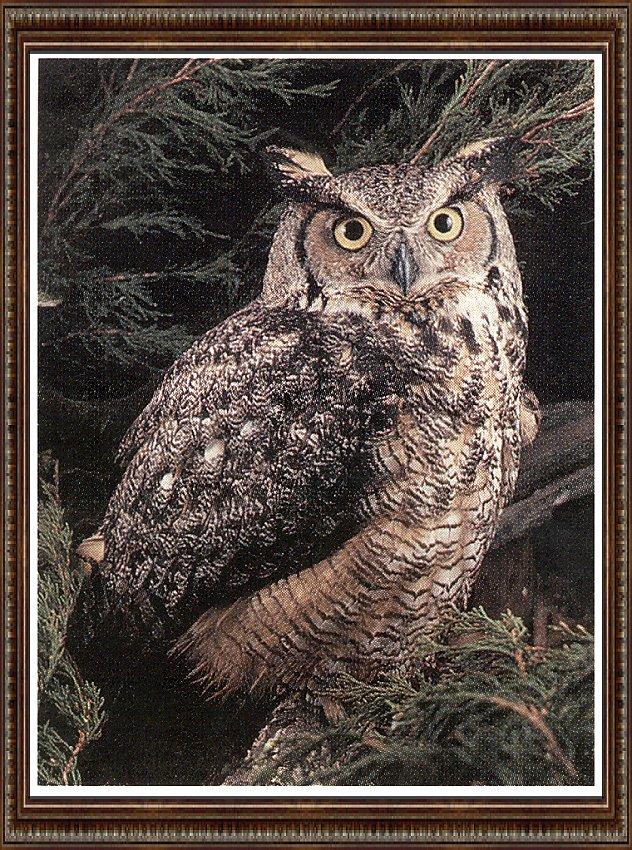|
| Query: bird | Result: 4637th of 32675 | |
Great Horned Owl (Bubo virginianus) <!--큰뿔부엉이/아메리카수리부엉이-->
| Subject: | Great Horned Owl (Bubo virginianus)
| |

| Resolution: 632x850
File Size: 205175 Bytes
Upload Date: 2004:12:14 16:19:02
|
Subject: Illinois State Parks 02
From: graylady
Newsgroups: alt.binaries.pictures.artpics
Date Posted: Sun, 28 Jan 2001 03:03:40 -0800
Comments
=========
The Great Horned Owl (Bubo virginianus) is a large owl native to the Americas. It is a powerful, mottled-brown predator that ranges from Arctic tree limits south to the Strait of Magellan. The Great Horned Owl is an extremely adaptable bird with a vast range and is the most widely distributed true owl in the Americas. It is often more than 60 cm long, with a wingspan often approaching 200 cm. Its primary diet is rabbits and hares, rats and mice, and voles, although it freely hunts any animal it can overtake, including rodents and other small mammals, larger mid-sized mammals, birds, reptiles, amphibians, and invertebrates.
Order: Strigiformes > Family: Strigidae > Genus: Bubo > Species: Bubo virginianus |
^o^
Animal Pictures Archive for smart phones
^o^
|
|